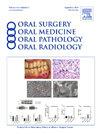Detection of dental restorations on panoramic radiographs using a no-code computer vision platform
IF 2
3区 医学
Q2 DENTISTRY, ORAL SURGERY & MEDICINE
Oral Surgery Oral Medicine Oral Pathology Oral Radiology
Pub Date : 2025-02-04
DOI:10.1016/j.oooo.2024.11.064
引用次数: 0
Abstract
Objective
To use a no-code computer vision platform (LandingLens) to develop, train, and evaluate an artificial intelligence model specifically designed for the detection of dental restorations on panoramic radiographs. No-code computer vision platforms, driven by deep learning neural networks, offer a versatile solution that effectively addresses challenges associated with the need for extensive machine learning expertise, expensive training costs, and operational proficiency.
Study Design
Institutional review board approval was obtained for this study. A convenient sampling method was employed to select one hundred panoramic radiographs from the AxiUm records of the dental school. Exclusion criteria were applied to ensure the selection of diagnostic radiographs. Accurate labeling of dental restorations was performed by calibrated dental faculty and students, with subsequent final review by a radiologist.
The radiographs were randomly split into training (70%), development (20%), and testing (10%) subgroups. The model was trained for 40 epochs using a medium model size. Data augmentation techniques such as horizontal flip and vertical flip were employed to enhance the training process.
Results
At a confidence threshold of 0.95, the model achieved a sensitivity of 86.64%, specificity of 99.78%, accuracy of 99.63%, and precision of 82.4%. These metrics indicate the model's ability to accurately detect dental restorations on a limited set of panoramic radiographs.
Conclusion
This study highlights the potential of no-code computer vision platforms in radiology. However, further research and validation are required to evaluate performance on larger and more diverse datasets, as well as for other detection tasks. Continued exploration of these platforms can contribute to advancements in dental imaging by democratizing computer vision development.
求助全文
约1分钟内获得全文
求助全文
来源期刊

Oral Surgery Oral Medicine Oral Pathology Oral Radiology
DENTISTRY, ORAL SURGERY & MEDICINE-
CiteScore
3.80
自引率
6.90%
发文量
1217
审稿时长
2-4 weeks
期刊介绍:
Oral Surgery, Oral Medicine, Oral Pathology and Oral Radiology is required reading for anyone in the fields of oral surgery, oral medicine, oral pathology, oral radiology or advanced general practice dentistry. It is the only major dental journal that provides a practical and complete overview of the medical and surgical techniques of dental practice in four areas. Topics covered include such current issues as dental implants, treatment of HIV-infected patients, and evaluation and treatment of TMJ disorders. The official publication for nine societies, the Journal is recommended for initial purchase in the Brandon Hill study, Selected List of Books and Journals for the Small Medical Library.
 求助内容:
求助内容: 应助结果提醒方式:
应助结果提醒方式:


